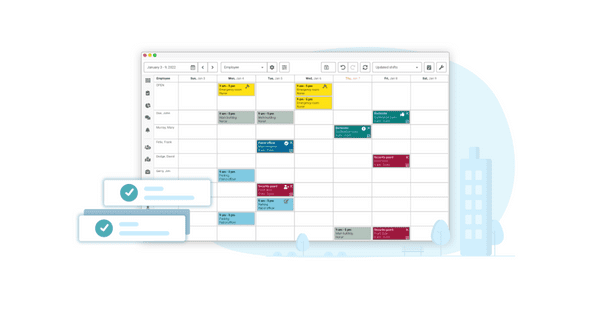Employee no-call/no-shows can be difficult for any manager to deal with. At the point when an employee refuses to appear for work with no previous indication that they would do so, it can greatly disturb the work process, put extra weight on associates, and even harm the standing of the organization. However, it’s important to note that no-shows can occur for different reasons and it’s the supervisor’s liability to deal with the circumstance in a fair and effective way. In this blog, we will examine the best strategies for managing employee no-shows. From laying out clear participation arrangements to empowering open correspondence and offering adaptable booking choices, we will give viable tips to managers to handle this work environment challenge and provide ways of executing them through the adoption of software

Reasons for no-call no-shows
The first step in dealing with employee no-call no-shows is to understand why it is happening. There are a variety of reasons why employees might miss work without giving advance notice, including:
- Personal emergencies or unexpected health issues
- Lack of reliable transportation
- Family responsibilities
- Lack of clear communication regarding scheduling and attendance expectations
- Burnout or job dissatisfaction
It’s important to keep in mind that there is often a root cause behind no-call no-shows, and addressing this underlying issue can help to prevent it from happening in the future.
Strategies to mitigate no-call/no-shows
Address the issue with the employee
Once the employee returns to work, it’s essential to have a private conversation with them about their absence. During this conversation, ask the employee for an explanation for their absence and listen to their response. Be understanding, but also firm in communicating the impact their absence had on the team and the company. If the employee has a valid reason for the no-call no-show, such as a family emergency, offer support and understanding. However, if the no-call no-show is a recurring issue, it’s important to address the situation before it becomes a bigger problem.
Encourage open communication
Encouraging open communication between employees and managers can help prevent no-call no-shows. When employees feel comfortable discussing their personal or work-related issues with their manager, they are more likely to reach out for support. This can help prevent the situation where an employee feels like they have no choice but to simply not show up for work. By fostering an environment of open communication, managers can build trust and a positive work culture.
Establish clear attendance policies
One of the most effective ways to prevent no-call no-shows is to establish clear attendance policies and communicate them to employees. The policies should outline the consequences of not showing up for work without notice, as well as the protocol for calling in sick or requesting time off. By having clear and concise policies, employees are more likely to follow them and avoid no-call no-shows.
Document each instance
When an employee fails to show up for work without notice, it’s crucial to document the instance. This documentation can be used in the future if the issue becomes a recurring problem. It’s also important to have a record of the conversation with the employee when they return to work, as this can serve as a reference in the future.
Implement a progressive discipline policy

If the no-call no-show becomes a recurring problem, it’s necessary to have a progressive discipline policy in place. This means that the consequences for the behaviour become more severe with each occurrence. The first step could be a verbal warning, followed by a written warning, and ultimately, termination if the behaviour continues. It’s important to communicate this policy to employees and stick to it consistently. This will help to discourage no-call no-shows and encourage employees to be responsible and accountable for their attendance.
Offer flexible scheduling options
Offering flexible scheduling options, such as the ability to work from home or flexible hours, can also help prevent no-call no-shows. When employees have options that allow them to balance their work and personal life, they are less likely to miss work without notice. By offering flexible scheduling options, managers can show that they care about their employees’ well-being and work-life balance.
How do implement such strategies?
Software.

Celayix Software is a powerful tool for dealing with employee no-call no-shows. Our software provides a comprehensive solution for tracking employee attendance, scheduling, and time off requests. It features real-time data and reporting capabilities, allowing managers to easily monitor and address any no-call no-shows as they occur. Celayix also includes automated alerts and reminders, reducing the risk of employees forgetting to call in or request time off. Additionally, its easy-to-use interface and customizable settings make it easy for managers to adapt the software to their specific needs and company policies. Overall, Celayix Software is a reliable and effective tool that can help managers address employee no-call no-shows and improve overall attendance and productivity.





